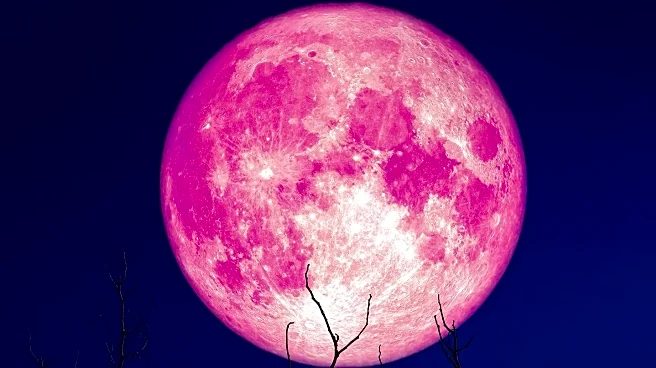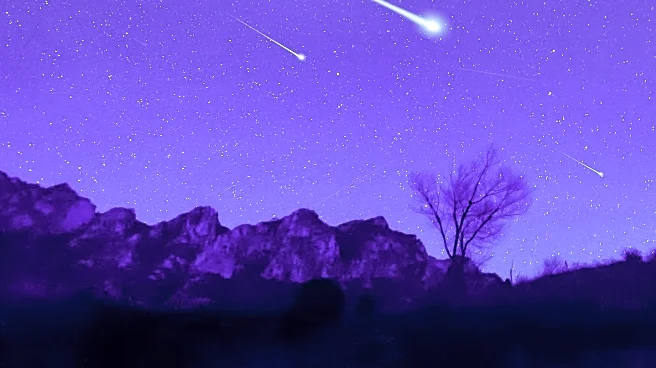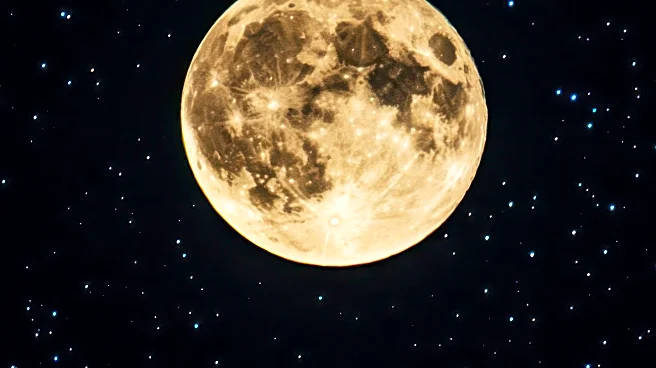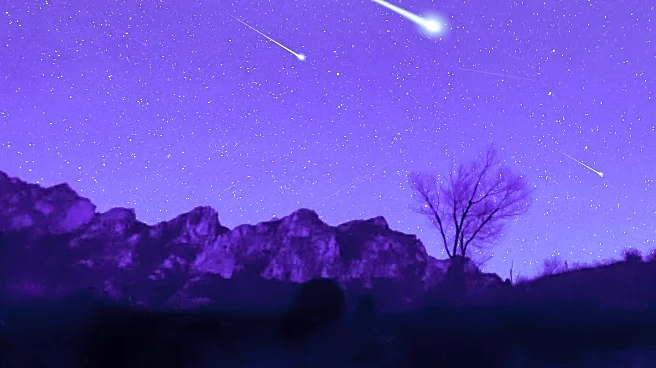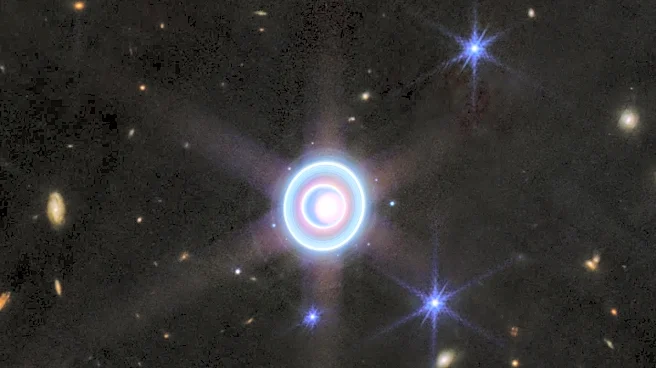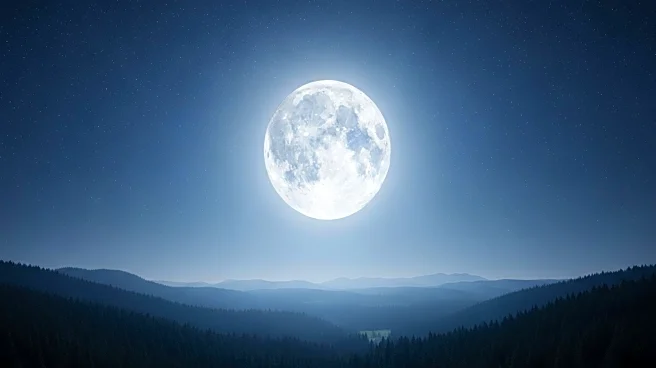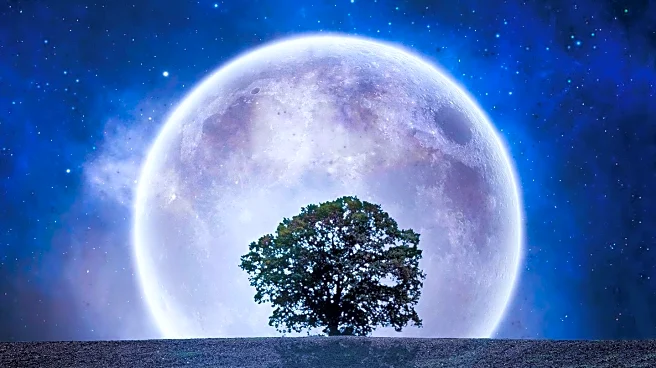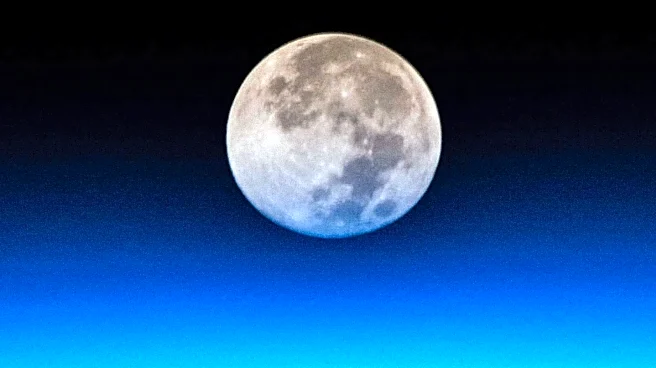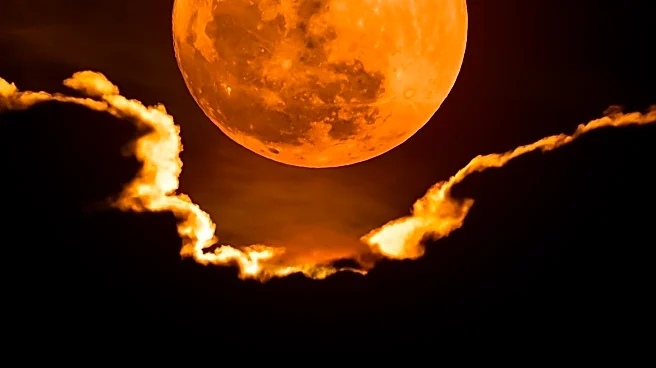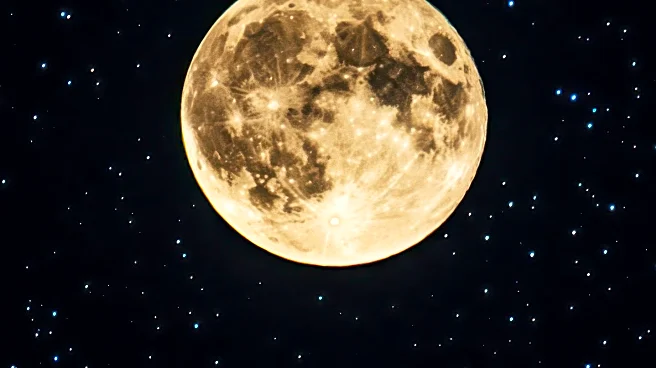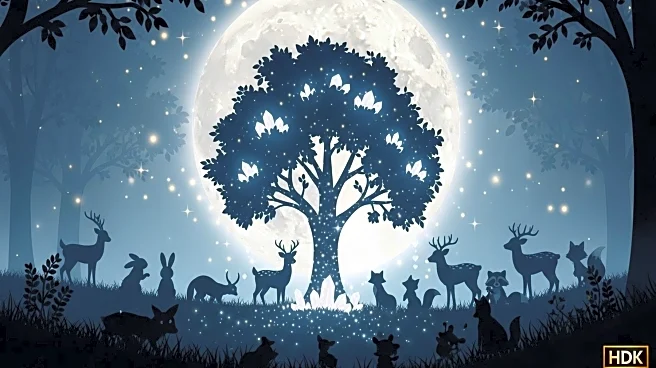What is the story about?
What's Happening?
The first supermoon of the year, known as the Harvest Moon, will grace the night sky on October 7, 2025. This supermoon will appear larger and brighter due to its proximity to Earth, reaching full phase at 11:48 p.m. ET. The moon's elliptical orbit brings it closer to Earth, enhancing its size and brightness. This event is part of a series of three consecutive supermoons, with the Beaver Moon and Cold Moon following in November and December, respectively. The Harvest Moon is traditionally significant for its role in aiding farmers with additional light for harvesting.
Why It's Important?
The Harvest Moon supermoon is a significant astronomical event that captivates both amateur and professional stargazers. Its increased brightness and size offer a unique viewing experience, encouraging public interest in astronomy. The event also holds historical importance, as it provided essential light for agricultural activities before the advent of electricity. The supermoon series highlights the dynamic nature of celestial events and their impact on cultural practices. This phenomenon can inspire educational initiatives and public engagement with science, promoting a broader understanding of lunar cycles and their effects.
What's Next?
Following the Harvest Moon, the Beaver Moon on November 5 will be the closest supermoon of 2025, offering another opportunity for observation. The Cold Moon on December 4 will conclude the series of supermoons. These events may lead to increased public interest in astronomy and related educational activities. Observatories and science centers might host viewing events to engage the community and provide learning opportunities. The consecutive supermoons could also inspire further research and exploration of lunar phenomena, contributing to a deeper appreciation of the natural world.
AI Generated Content
Do you find this article useful?
